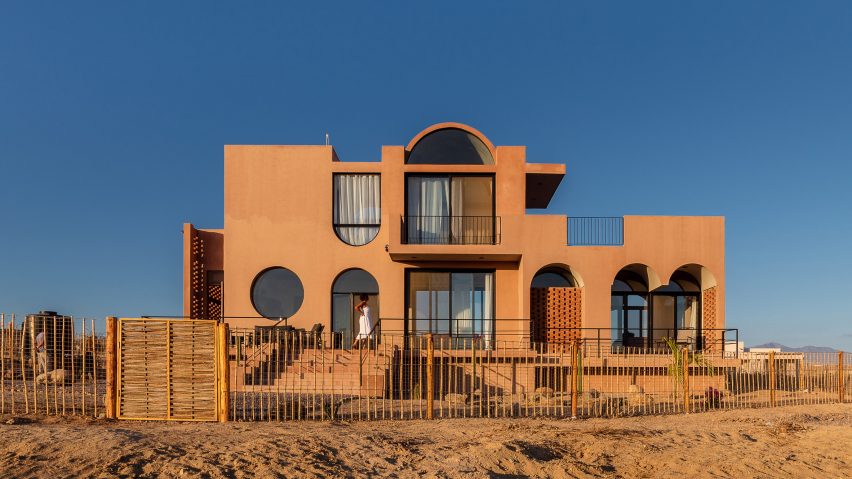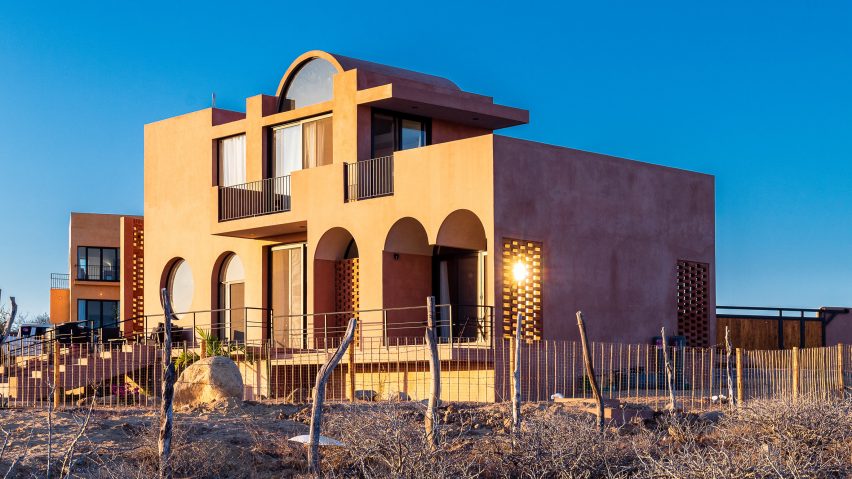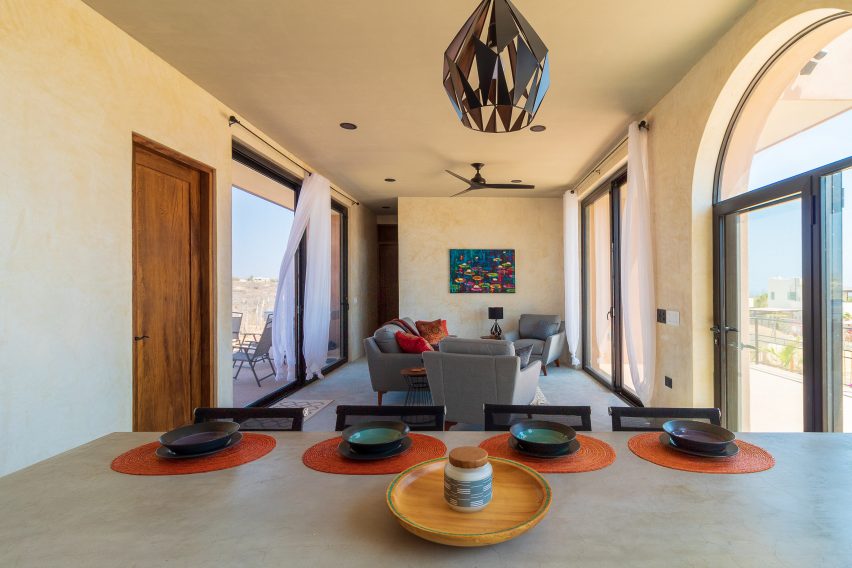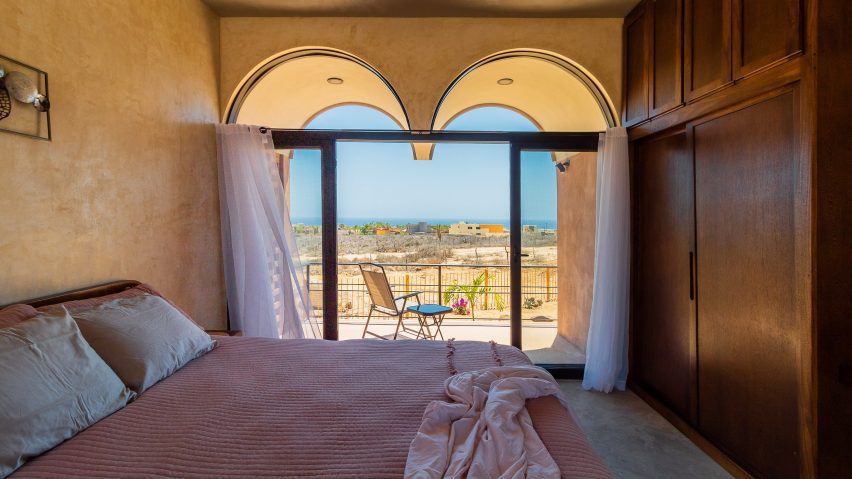
Earth-toned concrete covers Casa Calafia in Mexico by RED Arquitectos
Named after a mythical warrior queen, this house by RED Arquitectos features arched doorways and windows that overlook the Pacific Ocean from Mexico's Baja peninsula.
The 200-square-metre house is located in Todos Santos, a town sat roughly midway between La Paz and Cabo San Lucas, in Baja California Sur – known for its beaches and warm weather.

An American couple commissioned Mexican studio RED Arquitectos to complete their holiday home, which is named Casa Calafia after a queen from local legend.
"Its name is inspired by a warrior from Baja California Sur," said studio founder Susana López González, referring to Califia – who first appeared in the 1500s novel Las Sergas de Esplandián ("The Adventures of Esplandián") by Spanish poet Garci Rodríguez de Montalvo.

The fictional character signifies abundance, and over the centuries has come to represent a type of patron saint of the region, even lending her name to the modern state of California.
This powerful female icon, as well as the area's arid landscapes and views of the Pacific Ocean, led López González to develop a language of curved openings for the two-storey home.
"Formal expression through curves and sculptural geometry informs this second home on the Sea of Cortez," she explained.
A large terrace surrounds the home on the ground floor, and is slightly elevated to offer better views of its surroundings. The architect describes the cement-covered building as a "monolithic sculpture".

"The house is built with concrete block, since it is the most accessible material in the area, and its exterior and interior are covered with cement and natural pigments," she said.
Two guest bedrooms are on the lower level, separated by an open-concept kitchen, living and dining room that faces the ocean.

Outside, a set of stairs leads to the upper level. The circulation is partially screened by a brick lattice, which harks back to an industry once present in the town of Todos Santos.
The main bedroom is located upstairs, with its own ensuite and a wraparound terrace that provides views on three sides.

Pigmented cement covers most of the interior and exterior surfaces, lending the project a natural, uniform hue.
Several hospitality projects have recently been completed in the region. Other projects include a hotel made with traditional rammed earth walls and breezy thatched roofs by Estudio ALA, and a structure made of curved concrete walls for the Paradero Hotel.
The photography is by Miguel Angel Vazquez Calanchini.
Project credits:
Architect: Susana López González (RED Arquitectos)
Collaborator: Angélica Azamar Villegas
Construction: Rogelio Rojas Castro
Structural engineer: Apolinar Sanchez